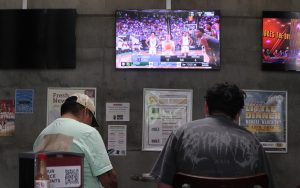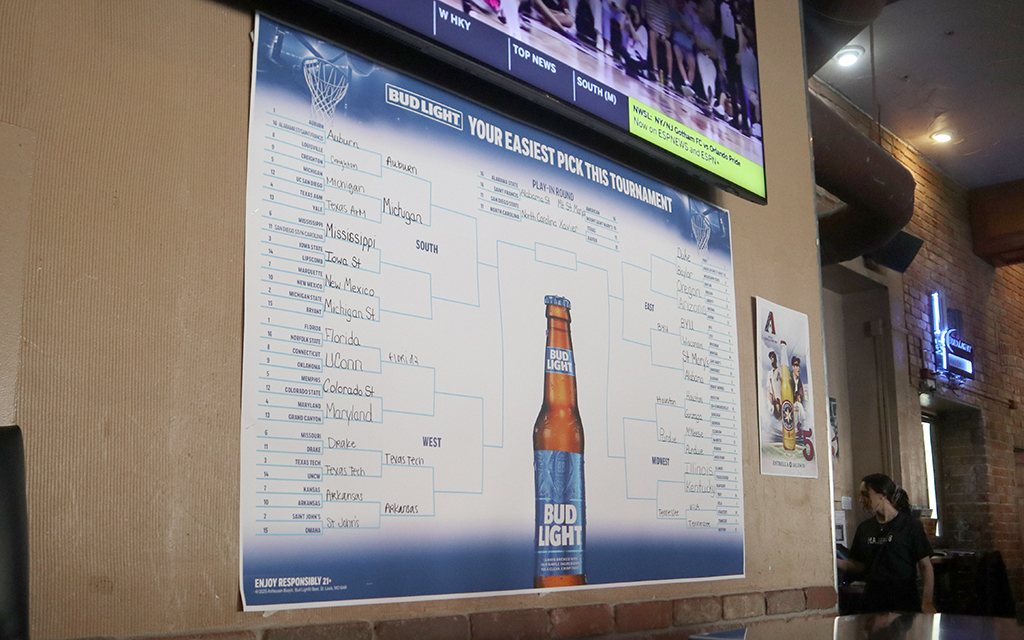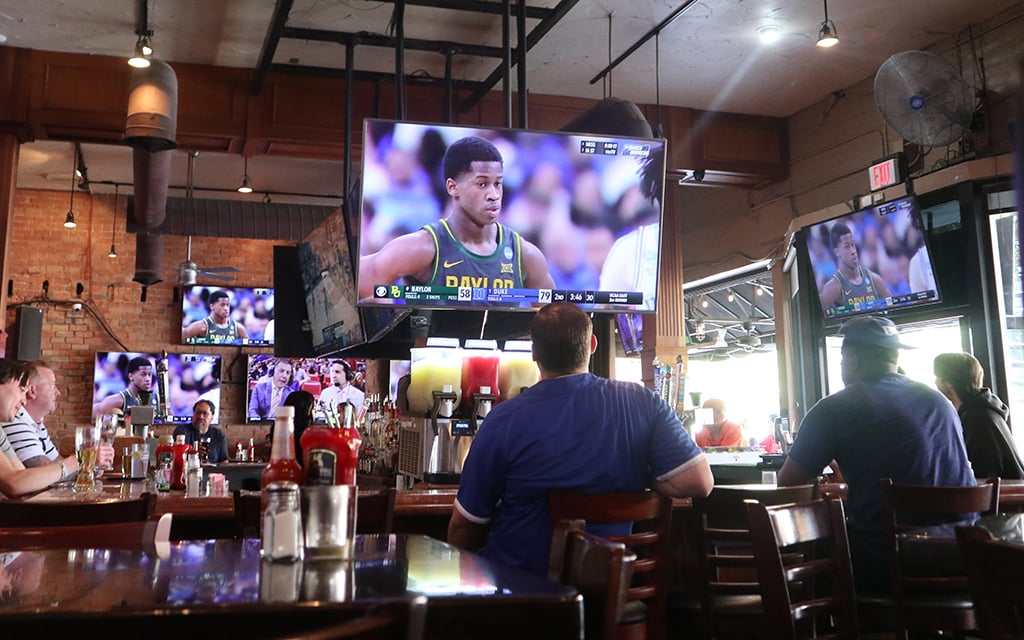PHOENIX – It was a bustling Sunday at Majerle’s Sports Grill in downtown Phoenix. Fried appetizers, cold drinks and fresh sunlight from the open-air bar surrounded the flatscreen TVs, which all played one thing: college basketball.
A day of food and community for fans of all types, the first weekend of the NCAA Tournament gathered intent watchers, featured constant cheering and offered a hope to witness history. Why? Anything is possible in March.
With Cinderella teams and buzzer beaters, the NCAA Tournament has become a cultural mainstay for Americans, sports fans or not. Its unique structure and culture have made March Madness stand apart from any other major sporting event.
Though college basketball (and athletics as a whole) have grown steadily over the last few years, the Big Dance has maintained a nearly mythical status through all the ebbs and flows of the business. To many fans, no tournament is as consistently exciting and compelling as the NCAA’s college basketball finale.
With a field of 68 competitive teams for both the men’s and women’s sides, the largest in American sports, the possibilities are nearly endless in the minds of fans. Some just fill out a bracket for fun, some follow college basketball all year and make detailed picks, but most sports fans recognize the cultural moment that March Madness has become, especially in its first weekend.
“No other sport, especially in the United States, gives you this tournament setup with midday, midweek games and the overlap of so many games at the same time. It’s so unique. So it’s so easy to get excited about that, because there’s so much happening all at once,” said Ryan Hammer, a college basketball analyst and personality with over 300,000 combined followers online. “The scheduling is a big part of it, because especially the first weekend, there’s not a single other thing going on.”

Students gather inside Gordon Commons in Phoenix to watch the Round of 32 NCAA Men’s Basketball Tournament games on Sunday, March 23, 2025. (Photo by Andrew Dirst/Cronkite News)
With no other major sports in a high-stakes part of their season, viewers are able to commit more time to college basketball. Though timeliness is important, a main draw to many tournament watchers is its accessibility to any level of fan.
For new fans like Maya Anthony, who said it’s her first time consistently tuning into the Big Dance, the interactiveness of the bracket has helped make the tournament feel more accessible.
She said the early rounds of playoffs, like the NFL Wild Card, are usually the most compelling to her. March Madness, with even more teams and matchups, amplifies this feeling.
“By the time you get to the second round, or the Sweet 16, or whatever it is, then you’re left with most of the top seeds,” Anthony said. “And by then it’s like, ‘Duh, we already knew we were going to be here.’”
The draw for most NCAA Tournament fans, seasoned or green, is how the tournament’s structure breeds Cinderella, or underdog, teams.
“That structure of kind of a lottery, this thing that people can participate in without knowing much about it … the size of the tournament, and then the history of the Cinderella story, the small school playing against the big school, that the small team, David, can beat Goliath,” said Abraham Calderon Martinez, professor at Arizona State’s Samford School of Social and Family Dynamics, describing the tournament’s mass appeal.
This emphasis on possibility has made March Madness an attractive outlet to those who just want an interesting story, team or player to follow.
This season, despite a lack of shocking upsets, it’s been the unbridled dominance of Duke and the streaky chaos of Arizona, the back-and-forth game-winners from Colorado State and Maryland, and the pure survival of 10-seeded Arkansas, the lowest-remaining seed alive.
“We are kind of searching for that again and again, right?” Calderon Martinez said. “We want to relive those experiences. We know that the sport has the potential to produce those outcomes, and so it does definitely keep us engaged in that way.”

The NCAA Men’s Basketball Tournament bracket is displayed at Majerle’s Sports Grill in downtown Phoenix, where fans followed the action on Sunday, March 23, 2025. (Photo by Andrew Dirst/Cronkite News)
This associated nostalgia and focus on the underdog is what initially drew in many viewers, and it keeps them coming back consistently.
“When Florida Gulf Coast made the Sweet 16 as a 15 seed, that was when I really started to follow March Madness,” said Jack Lowe, an ASU sophomore studying biomedical engineering. “I found it really interesting, I feel like there’s not a lot of other sports where very small schools like that get so much attention.”
Fans will always love a heartwarming story, and there are a lot of possibilities within a single-elimination field of 68 teams.
Hammer said the rise of buzzer-beaters, compilation videos and iconic March moments that circulate before and during the tournament create an energy that fuels this idea of the Cinderella.
“It gets (fans) excited to, I guess, fantasize about what could happen with Akron or whatever schools are playing,” Hammer said.
Though the first weekend wrapped up in a relatively “chalk”’ fashion, there is still plenty to look forward to heading into the Sweet Sixteen. Most brackets are busted, even though the week marked the farthest a perfect bracket had made it since 2019, but fans will still be cheering on the closest thing they can find to an underdog or compelling story.
As both the men’s and women’s tournaments glide into the Sweet Sixteen, there is still a lot of excitement left despite a historic lack of low seeds and underdog teams.
“I don’t think there’s really any other event where everyone kind of cares,” Lowe said. “I’m in a pool at work and they never do anything like that with the NFL or the NBA or even college football. It just doesn’t happen.”

